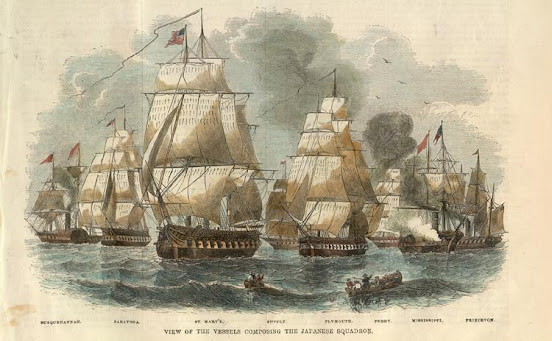Commodore Perry Returns

The eight ships of the Far East Squadron in Perry's return to Japan Perry now turned his attention to the small islands between Japan and China. At the time, several of these were small kingdoms. At each, Perry exacted a treaty similar to the one he would negotiate with Japan. The treaties provided sailors washed ashore would be well treated; that the king would sell supplies to American ships, in return Americans would buy from nobody else on the islands; and, that the kingdoms would serve as coal storage points for the American navy. This last part encountered opposition. The islanders had no wish to be responsible for coal that might be washed/blown away in a typhoon, pilfered by the natives, seized by pirates or other navies, etc., and then suffer the threatened consequences by the US Navy. A Russian fleet had reached Japan only a few weeks after Perry in 1853. The Russians left hurriedly without a treaty on hearing the Crimean War had started and guessed the French an



